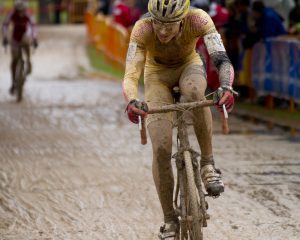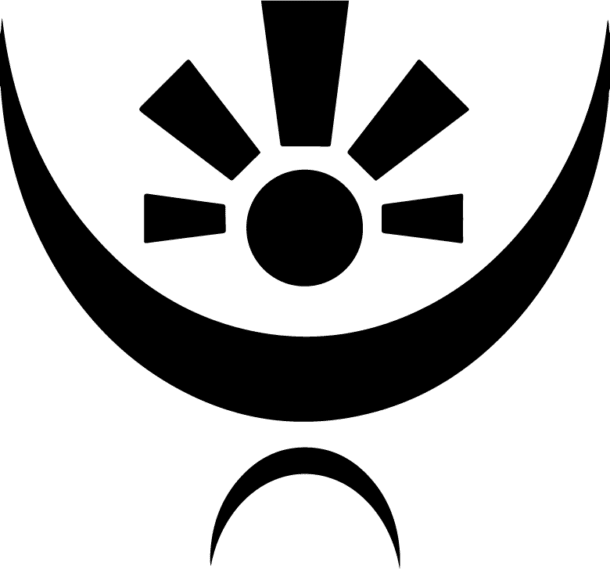Acupuncture and Pain: Magic or Science?
How does acupuncture work?
It is important for the future of integrative medicine to demystify acupuncture, and start discussing its  physiological properties in a way that the modern person with a basic understanding of human anatomy and physiology can understand. Acupuncture often gets lumped into a general category of “Energy Medicine”, which for some, equates to non-scientific woo-woo therapies that must operate through placebo effect. The reality is, energy is a real phenomenon, based on the laws of the universe, and understood through math and physics. Energy is measurable, and the more advanced our technology is, the better we are able to measure it. Energy medicine arguably, could be anything from a person practicing Tai Chi, to someone placing their hands on another person with therapeutic intent, to electroconvulsive therapy in the treatment for severe depression. The point being, energy medicine could in theory, encompass a broad range of healing therapies, some scientifically proven and some not so well understood. For those who really want to delve into the science of energy medicine, read James Oschman’s book Energy Medicine.
physiological properties in a way that the modern person with a basic understanding of human anatomy and physiology can understand. Acupuncture often gets lumped into a general category of “Energy Medicine”, which for some, equates to non-scientific woo-woo therapies that must operate through placebo effect. The reality is, energy is a real phenomenon, based on the laws of the universe, and understood through math and physics. Energy is measurable, and the more advanced our technology is, the better we are able to measure it. Energy medicine arguably, could be anything from a person practicing Tai Chi, to someone placing their hands on another person with therapeutic intent, to electroconvulsive therapy in the treatment for severe depression. The point being, energy medicine could in theory, encompass a broad range of healing therapies, some scientifically proven and some not so well understood. For those who really want to delve into the science of energy medicine, read James Oschman’s book Energy Medicine.
Returning to the topic of acupuncture, the most common questions I get asked is, “how does it work?” Acupuncture has a measurable, physiological impact on the body, and it has an important effect on the brain as well. The more we learn about the human body, the more we realize that the distinctions we make between brain and body, or the digestive system and immune system, for example, are arbitrary distinctions. The digestive system cannot be discussed without addressing its immune system components, and we now know, the gut interacts dynamically with the brain through the vagus nerve, a term we call the “gut-brain axis”. The body and brain function as one unit. When acupuncture is performed, it doesn’t just have a local effect in the area of the needle. The brain and nervous system are responding to that signal, as is the entire network of connective tissue that surrounds all the muscles, joints, bones, and internal organs. The entire body and brain are involved in an acupuncture treatment.
Blood Flow
Acupuncture improves blood flow to injured areas, and by doing so, increases healing time. We spend a lot of time talking about the importance of nutrition, eating nutritious food and taking vitamins, minerals, and supplements to improve our nutrition. We forget that all those nutrients also have important places they need to be! Once absorbed by the body and processed by the liver, it’s the blood that ferries nutrients to where they need to go. When people have injuries and degenerative conditions, blood flow to those areas is decreased, and important nutrients aren’t getting through. Acupuncture, cupping, moxabustion, gua sha, and Chinese herbal medicine are all techniques employed by licensed acupuncturists to effectively improve blood flow. For more in-depth descriptions of these techniques, click here.
Connective Tissue
 When it comes to injuries, muscles and joints are often the focus of conversation, however, pain-free movement relies heavily on healthy, mobile, connective tissue. It helps to visualize connective tissue like Saran wrap covering the muscles. Not unlike Saran wrap, connective tissue can get bunched up, and the muscle fibers no longer glide smoothly underneath it. This causes restricted movement and pain. Not only that, a connective tissue problem in one area can have a negative impact on other areas of the body. If you grab the corner of a bed sheet and twist it up, that creates tension in all three other corners. The body is the same way. Our sheets of connective tissue cover large areas. You injure an area in the hip, and it can easily cause pulling and tension all the way into the knee, or the opposite shoulder. Acupuncture and other techniques help to release restrictions in the connective tissue. This is honestly, one of the major ways in which acupuncture helps to decrease pain and improve range of motion. No mystery or magic needed, just a solid understanding of anatomy and functional movement patterns.
When it comes to injuries, muscles and joints are often the focus of conversation, however, pain-free movement relies heavily on healthy, mobile, connective tissue. It helps to visualize connective tissue like Saran wrap covering the muscles. Not unlike Saran wrap, connective tissue can get bunched up, and the muscle fibers no longer glide smoothly underneath it. This causes restricted movement and pain. Not only that, a connective tissue problem in one area can have a negative impact on other areas of the body. If you grab the corner of a bed sheet and twist it up, that creates tension in all three other corners. The body is the same way. Our sheets of connective tissue cover large areas. You injure an area in the hip, and it can easily cause pulling and tension all the way into the knee, or the opposite shoulder. Acupuncture and other techniques help to release restrictions in the connective tissue. This is honestly, one of the major ways in which acupuncture helps to decrease pain and improve range of motion. No mystery or magic needed, just a solid understanding of anatomy and functional movement patterns.
The Pain Neuromatrix
 Chronic pain is a very different beast than acute pain. Acute pain is there for a reason. It’s telling you not to run on a broken ankle, or throw a football when your shoulder is dislocated. Chronic pain often persists long after there is an actual “injury” that out of necessity, requires you to immobilize and rest a joint or muscle. Chronic pain involves specific regions in the brain some like to refer to as the “pain neuromatrix”. Think of it like a figure eight race track in the brain, where the car just keeps zipping around and around, or like a song playing in a continuous loop until you feel like you might go mad. People with chronic pain cope and cope and cope, until they can’t anymore. They break down, cry, scream, get angry, binge drink, pop some pills, and then, pick themselves up the best they can, and keep moving forward, day by day. Many of these people don’t even know there are alternatives beyond pain medication, but there are. Acupuncture can help by changing brain signaling patterns. Functional MRI imaging techniques are able to see what regions of the brain become active and inactive when acupuncture is performed. Certain acupuncture points are able to cause decreased activity in the areas of the brain associated with the pain neuromatrix, or as I like to call it, the race track of pain. When people talk about neuroplasticity, they are talking about the brains ability to break up old patterns, and form new connections in the brain. Acupuncture helps to build new race tracks in the brain, that don’t involve wanting to jump off a bridge because your back hurts.
Chronic pain is a very different beast than acute pain. Acute pain is there for a reason. It’s telling you not to run on a broken ankle, or throw a football when your shoulder is dislocated. Chronic pain often persists long after there is an actual “injury” that out of necessity, requires you to immobilize and rest a joint or muscle. Chronic pain involves specific regions in the brain some like to refer to as the “pain neuromatrix”. Think of it like a figure eight race track in the brain, where the car just keeps zipping around and around, or like a song playing in a continuous loop until you feel like you might go mad. People with chronic pain cope and cope and cope, until they can’t anymore. They break down, cry, scream, get angry, binge drink, pop some pills, and then, pick themselves up the best they can, and keep moving forward, day by day. Many of these people don’t even know there are alternatives beyond pain medication, but there are. Acupuncture can help by changing brain signaling patterns. Functional MRI imaging techniques are able to see what regions of the brain become active and inactive when acupuncture is performed. Certain acupuncture points are able to cause decreased activity in the areas of the brain associated with the pain neuromatrix, or as I like to call it, the race track of pain. When people talk about neuroplasticity, they are talking about the brains ability to break up old patterns, and form new connections in the brain. Acupuncture helps to build new race tracks in the brain, that don’t involve wanting to jump off a bridge because your back hurts.
Acupuncture is ancient medicine, yet, it has a very real and beneficial impact on the body and the mind. Doctors honor the code of Do No Harm, yet, many are quick to recommend invasive surgeries and pain medications that have serious side effects and the potential to create addictions and destructive behaviors. There are certainly times when these interventions are needed, however, it would make much more sense to first try safe, natural interventions. Rather than using acupuncture as a last-ditch-attempt-when-everything-else-fails form of medicine, it should be seen as an initial strategy.
References:
Bai, L., Tao, Y., Wang, D., Wang, J., Sun, C., Hao, N., . . . Lao, L. (2014). Acupuncture Induces Time-Dependent Remodelling Brain Network on the Stable Somatosensory First-Ever Stroke Patients: Combining Diffusion Tensor and Functional MR Imaging. Evid Based Complement Alternat Med, 2014, 740-480. doi: 10.1155/2014/740480
Biella, G., Luisa, M., Pellegata, G., Paulesu, E., Castiglioni, I., & Fazio, F. (2001). Acupuncture produces central activations in pain regions. NeuroImage, 14, 60-66. doi: 10.1006/nimg.2001.0798
Chen, J., Wang, J., Huang, Y., Lai, X., Tang, C., Yang, J., . . . Qu, S. (2014a). Modulatory effect of acupuncture at Waiguan (TE5) on the functional connectivity of the central nervous system of patients with ischemic stroke in the left basal ganglia. PLoS ONE, 9(6). doi: 10.137/journal.pone.0096777
Dhond, R., Yeh, C., Park, K., Kettner, N., and Napadow, V. (2008) Acupuncture modulates resting state connectivity in default and sensorimotor brain networks. Pain 136:407-418.
Hsieh, J., Tu, C., Chen, F., Chen, M., Yeh, T., Cheng, H., Wu, Y., Liu, R., and Ho, L. (2001). Activation of the hypothalamus characterizes the acupuncture stimulation at the analgesic point in humans: a positron emission tomography study. Neuroscience Letters 307:105-108.
Zhang, Y., Li, K., Ren, Y., Cui, F., Xie, Z., Shin, J. Y., et al. (2014). Acupuncture modulates the functional connectivity of the default mode network in stroke patients. Evid Based Complement Alternat Med, 2014, 765413. doi: 10.1155/2014/765413


